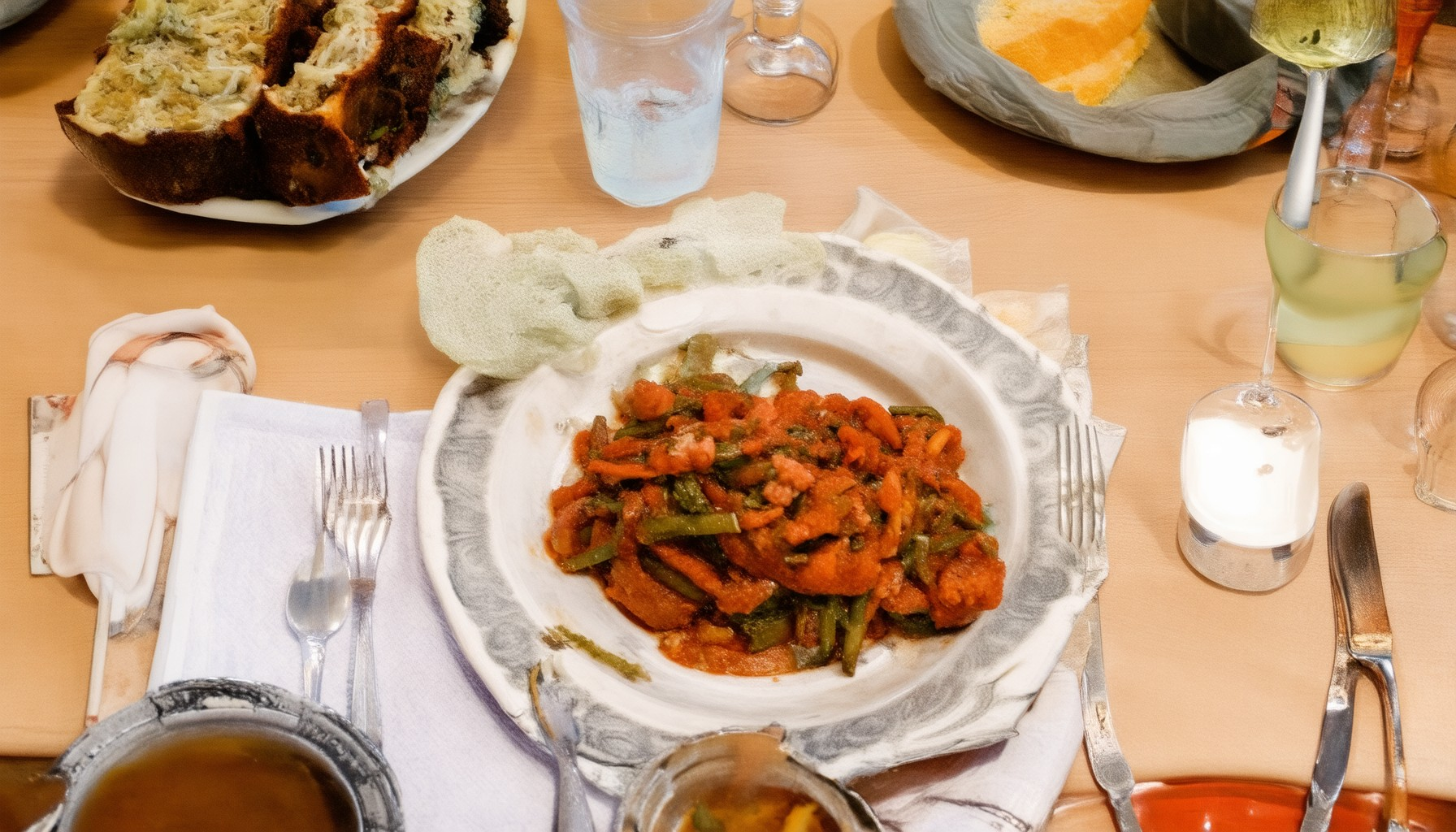Dining on a budget can often feel like a daunting task, especially when you’re juggling tight finances and busy schedules. Whether you’re a solo eater, part of a small family, or managing a household, finding affordable meal solutions that still deliver flavor and nutrition can feel overwhelming. But mastering the art of dining on a budget doesn’t have to be stressful—there are countless ways to plan meals that are both economical and satisfying. From learning how to shop smartly and cook efficiently to discovering budget-friendly recipes that pack a punch, this guide is designed to help you make the most of your resources while enjoying meals you truly love. With tips on meal planning, healthy eating on a budget, and even ideas for dining out without breaking the bank, this article covers everything you need to know to master dining on a budget and make every meal count.
Key Takeaways
– Meal Planning and Smart Shopping: Create a structured weekly meal plan and prioritize shopping during seasonal periods to maximize your budget.
– Affordable Staples: Focus on cost-effective ingredients like whole grains, legumes, and seasonal produce to build nutrient-dense, budget-friendly meals.
– Cook at Home: Save money by preparing meals at home, reducing waste, and experimenting with affordable, healthy recipes.

What is the cheapest meal to make on a budget?
Creating affordable and delicious meals doesn’t have to be complicated. Here’s a simple guide to cooking budget-friendly dinners that taste gourmet:
- Simple Stir-Fry: Use leftover rice, vegetables, and a cheap protein like tofu or beans. Add soy sauce and sesame oil for flavor.
- Vegetable Curry: Combine canned tomatoes, coconut milk, and frozen veggies for a hearty and inexpensive curry. Serve with jasmine rice.
- Egg Skillet Dinner: Whisk eggs with milk, add diced potatoes, onions, and cheese. Season with salt and pepper for a filling meal.
- Cheesy Pasta: Toss cooked pasta with shredded cheese, tomato paste, and garlic powder. Top with crushed red peppers for a kick.
- Black Bean Tacos: Warm corn tortillas, top with seasoned black beans, avocado slices, salsa, and lettuce. Keep it simple for a budget-friendly treat.
These meals require minimal ingredients and cooking skills, making them perfect for those looking to save money while enjoying delicious food. For more budget-friendly recipes, check out our complete guide to budget cooking .
Dining Out Budget Guide
A reasonable dining out budget depends on several factors, including location, cuisine type, and group size. Here’s a breakdown of typical spending ranges:
- Individual Diners: $200 – $400 per month
- Couples: $300 – $600 per month
- Families: $400 – $800+ per month
Key considerations for managing your dining out budget:
- Cuisine Type: Fine dining can cost $50+ per person, while casual eateries may be under $20.
- Location: Urban areas typically have higher costs due to competition and demand.
- Meal Timing: Lunches are generally cheaper than dinners.
- Dietary Preferences: Look for vegetarian or budget-friendly menu options.
- Deals and Discounts: Take advantage of happy hours, early bird specials, and loyalty programs.
By planning ahead and making smart choices, you can enjoy dining out without overspending. Remember to check for daily specials and consider sharing dishes to maximize value.

Dining Out on a Budget: A Strategic Guide
Planning an evening out doesn’t mean you have to spend a fortune. With a bit of strategy and awareness, you can enjoy a delicious meal without breaking the bank. Here are some proven tips to help you make the most of your dining experience while staying within your budget:
- Plan Ahead: Research menus online to find restaurants that offer affordable options. Check for specials, happy hour deals, and early-bird discounts. Planning ahead also allows you to make informed decisions about where to dine.
- Make Smart Choices: Opt for smaller portions or share plates to reduce costs. Choose restaurants known for offering great deals on certain days, like “Kids Eat Free” promotions or discounted appetizer menus.
- Take Advantage of Deals: Sign up for loyalty programs or frequent diner clubs to earn rewards. Many restaurants offer discounts for first-time visitors or for bringing a friend along.
- Avoid Common Mistakes: Steer clear of expensive drinks and desserts unless they’re included in a deal. Ordering water instead of soft drinks can save significant money, and skipping costly add-ons like cheese or extra protein can keep your bill low.
- Consider BYOB: Many restaurants allow you to bring your own wine or beer, eliminating the need to pay exorbitant markups on alcohol. Check with the restaurant beforehand to confirm their policy.
- Explore Alternative Options: Fast-casual chains often offer affordable eats, while food trucks and ethnic diners tend to have budget-friendly menus. Consider splitting a larger dish or ordering family-style to maximize your meal’s value.
By incorporating these strategies into your dining-out routine, you can enjoy a memorable experience without overspending. Remember to always check for available discounts and special offers to make the most of your budget.

How to Spend $20 a Week on Food
Spending $20 a week on food can be both affordable and enjoyable with careful planning and smart shopping strategies. Here’s a step-by-step guide to making the most of your budget:
- Meal Plan:** Create a weekly meal plan that includes breakfast, lunch, dinner, and snacks. This ensures you don’t overspend on individual items and reduces waste.
- Shop Smart:** Visit local markets or grocery stores with a shopping list. Stick to seasonal produce and look for sales or discounts.
- Buy Bulk:** Purchase non-perishable items like grains, pulses, and dried fruits in bulk for lasting meals.
- Limit Wastage:** Plan meals to minimize leftovers and avoid overbuying.
- Eat Out Wisely:** If eating out, choose affordable options like food trucks or ethnic restaurants known for budget-friendly menus.
- Snack Strategy:** Opt for affordable snacks like fruits, nuts, or yogurt to keep energy levels high without breaking the bank.
- Cook at Home:** Cooking meals at home allows you to control costs and experiment with healthier, budget-friendly recipes.
For more ideas and recipe inspiration, explore our Cheap Meals section and discover how to maximize your food budget with delicious, nutritious dishes.
What is the Cheapest Food to Live Off Of?
Living off the cheapest food possible requires careful planning and understanding of nutrition to ensure a balanced diet while minimizing expenses. Here’s a guide to eating affordably:
- Cereals and Grains: Incorporate affordable staples like rice, wheat, oats, and quinoa into your meals. These are not only cost-effective but also provide essential nutrients.
- Legumes: Beans, lentils, chickpeas, and peas are highly nutritious and economical. They can be used in various dishes to add protein and fiber.
- Fruits and Vegetables: Opt for seasonal produce, which is typically cheaper. Include starchy vegetables like potatoes and sweet potatoes for filling meals.
- Eggs and Plant-Based Proteins: Eggs are a versatile and affordable protein source. Consider tofu, tempeh, or seitan for plant-based options.
- Fats and Oils: Use cooking oil (e.g., vegetable oil) and include affordable dairy products like milk and yogurt in your diet.
- Spices and Herbs: Enhance flavors with affordable spices and herbs like garlic, onions, cumin, and paprika.
- Condiments: Use vinegar, hot sauce, or other low-cost condiments to add flavor without spending much.
Meals can be stretched by incorporating legumes with proteins and grains, using spices to add variety, and proper food storage to minimize waste. Planning meals ahead and shopping strategically can help maximize budget and nutrition.

How Much Should 2 People Spend on Food a Week?
Your weekly food budget for two depends on several factors, including eating habits, dietary preferences, and location. Here’s a breakdown:
- Average Grocery Budget: Around $150 – $200 per week for two people. This includes proteins, vegetables, grains, dairy, and snacks.
- Eating Out Costs: If you eat out frequently, expect to spend significantly more. A dinner for two at a casual restaurant can range from $20 to $50+, depending on the menu and location.
- Dietary Considerations: Vegetarians or those with dietary restrictions may spend slightly more due to specialized foods.
- Portion Sizes and Waste: Cooking at home generally reduces waste and portion sizes compared to eating out.
To save money, consider:
- Meal Planning: Plan meals to minimize waste and reduce the need for last-minute purchases.
- Shopping Smartly: Buy seasonal produce and look for store-brand products to save money.
- Cooking More Often: Eating at home can significantly cut down on expenses compared to dining out.
Conclusion: Aim for a weekly grocery budget of $150 – $200 for two people, adjusting based on eating habits and lifestyle. Balance cooking at home with occasional dining out to manage costs effectively.





0 Comments